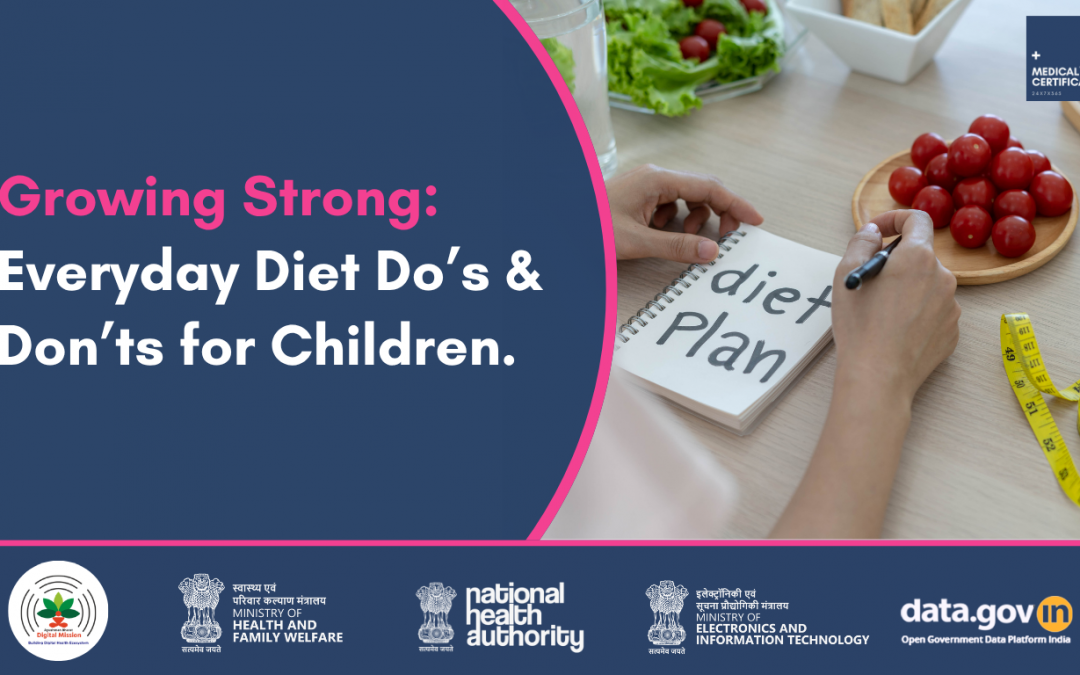Feeding children often feels like negotiating with a tiny, stubborn food critic. One day bananas are their absolute favorite. The next day they declare bananas are yucky. You might spend precious time preparing a colourful, nutritionist-approved plate only to watch them pick out the plain rice. Sounds familiar?
If you are a parent, caregiver, or even the older sibling on babysitting duty, you already know mealtimes are a blend of love, worry, and a touch of desperation. You want your child to grow strong and healthy, not live on fries and cubes of cheese. But the constant rejection of broccoli can wear you out.
The good news is that a child’s diet does not have to be perfect. It simply needs to be balanced, realistic, and sometimes a little clever. Here is a straightforward guide to feeding growing kids with the right mix of science, common sense, and plenty of patience.
Growing Bodies Need More Than Just Calories
Children are not just hungry; they are busy building bones, muscles, blood, and brain connections at a rapid pace. This means their bodies need a lot more than mere fuel. They need proteins for muscle and tissue growth such as eggs, lentils, milk, and tofu. They need calcium and vitamin D for strong bones, which come from milk, ragi, leafy greens, and some sunlight. They also need iron to help carry oxygen and keep energy levels up, found in beans, jaggery, dates, and spinach. Healthy fats support brain development and these are present in ghee, nuts, seeds, and avocados.
It might seem overwhelming, but you do not have to cram every nutrient into every meal. Balance things out over the week and it will add up.
Breakfast Is a Must
Try talking to a hungry child at ten in the morning and you will quickly see why skipping breakfast is a bad idea. It often leads to poor attention, low energy, and crankiness. Think of it like starting the day on an empty fuel tank.
Easy, kid-friendly breakfast options include oats topped with banana and peanut butter, whole wheat toast with scrambled eggs, vegetable poha or upma, or parathas served with curd or a boiled egg. Even if mornings are rushed, prepping ahead or keeping quick options ready can help. Something simple is still better than nothing.
The Secret Power of Hidden Nutrition
Sometimes the best way to get kids to eat more vegetables is not by insisting they do. It is by slipping them in quietly. Think of it as a smart kitchen trick, not a deception.
Try blending spinach or carrots into dosa or idli batter. Grate bottle gourd or beetroot into paratha dough. Stir powdered nuts and seeds into milkshakes. Mix lentils into pasta sauces or khichdi. This way you are meeting them at their level and still getting nutrients in.
Snacks Are Not Bad but Junk Food Is
Growing kids often feel hungry between meals. That is completely normal. Instead of banning snacks, think about redefining what a snack means.
Swap chips for roasted makhana or homemade popcorn. Replace chocolate bars with peanut chikki or dry fruit laddoos. Offer whole wheat banana muffins instead of packaged biscuits. Snack time can be a great chance to add nutrition, not just extra calories. You can even keep a dedicated snack box with better options that kids can pick from on their own.
Keep Them Hydrated for Better Focus and Energy
Many children do not drink enough water and mild dehydration often shows up as tiredness, poor concentration, and irritability. If plain water does not tempt them, try adding a squeeze of lemon or orange juice, drop in some mint leaves or cucumber slices, or offer homemade buttermilk or coconut water after outdoor play.
A simple rule like one glass of water before screen time works surprisingly well.
Respect Their Appetite, Even If It Seems Small
Some days your child may eat everything in sight. Other days they might pick at their plate like a little bird. This is completely normal.
Children are often better at listening to their hunger signals than adults are. Forcing them to finish what is on their plate can set up an unhealthy relationship with food later on.
Focus on offering a variety of foods, not large portions. Let them say they are full without turning it into an issue. Keep mealtimes relaxed and away from screens. Your role is to provide healthy choices. Their role is to decide how much they want to eat.
Be the Example You Want Them to Follow
Kids watch what you do far more closely than they listen to what you say. If they see you enjoying meals, trying new vegetables, drinking water often, and eating at regular times, they are much more likely to follow that lead. Even having family meals a few times a week can go a long way in building healthy habits.
Use the 80-20 Approach
Healthy eating does not have to be all or nothing. Let them enjoy cake at birthday parties, fries on a Sunday, or a chocolate now and then. As long as about eighty percent of what they eat is balanced and wholesome, the rest is simply part of growing up happily.
Worrying too much or teaching them guilt around food can be far more harmful than the occasional treat.
The Last Bite: Keep It Real, Not Perfect
Feeding kids is part nutrition, part psychology, and a whole lot of patience. Some days they will polish off two rotis with dal and sabzi. Other days they will proudly call toast with ketchup a gourmet meal. That is absolutely fine.
The aim is not perfection. Regular routines build good habits over time. And love, the ingredient you add to every meal, remains the healthiest part of all.
Take a deep breath, pack that lunchbox, and remember you are doing far better than you think.

